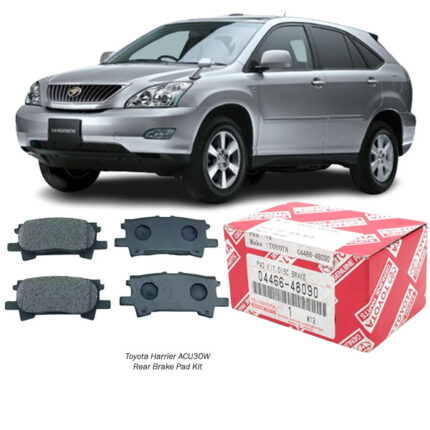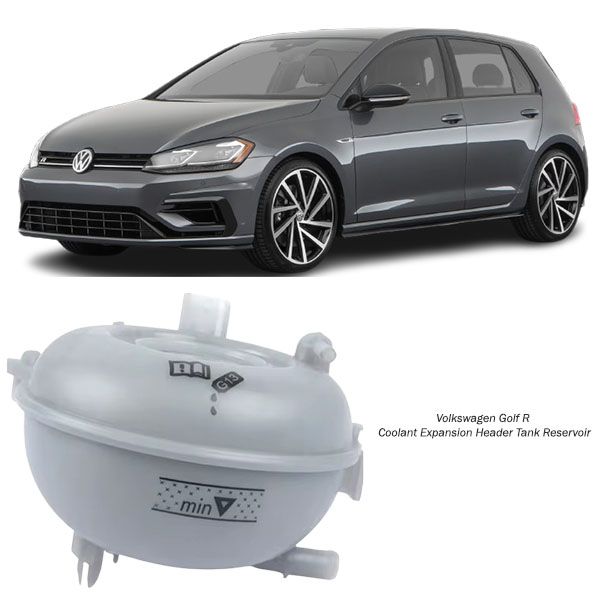Get Volkswagen Golf R Coolant Expansion Header Tank Reservoir 5Q0121407M in Kenya
The coolant expansion header tank reservoir is a vital component of a vehicle’s cooling system. Whether you drive a Toyota Prado 120/150, Nissan Note, Wingroad, Tiida, or any other vehicle, keeping your engine cool is essential for preventing overheating and ensuring smooth operation.
In this guide, we’ll discuss what the coolant expansion tank does, how it works, signs of failure, maintenance tips, and the importance of choosing the right reservoir for your vehicle.
What Is a Coolant Expansion Header Tank Reservoir? 🏎️
The coolant expansion header tank reservoir (often called a coolant reservoir or overflow tank) is a plastic or metal container that holds excess coolant from the radiator.
Main Functions:
🔹 Stores Extra Coolant – Prevents coolant overflow when the engine heats up.
🔹 Maintains Proper Pressure – Ensures the cooling system remains sealed.
🔹 Prevents Air Bubbles – Avoids air pockets that can lead to overheating.
🔹 Allows Coolant to Re-enter the System – When the engine cools down, coolant is drawn back into the radiator.
Without a properly functioning coolant reservoir, your vehicle is at risk of engine overheating, coolant leaks, and even severe engine damage.
How Does a Coolant Expansion Tank Work? 🔧
The cooling system is pressurized, meaning that as the engine warms up, the coolant expands. This excess coolant flows into the expansion tank to prevent the system from becoming over-pressurized.
Cooling Cycle:
1️⃣ Engine Starts & Heats Up – Coolant expands and excess flows into the reservoir.
2️⃣ Engine Reaches Operating Temperature – The cooling system stabilizes.
3️⃣ Engine Cools Down – Coolant contracts and is sucked back into the radiator.
The expansion tank works with a pressure cap that maintains the right pressure level (typically 12-16 PSI) to ensure efficient cooling.
Types of Coolant Expansion Tanks 🛠️
Not all vehicles use the same type of coolant reservoir. Here are the most common types:
1️⃣ Pressurized Expansion Tanks
✔️ Directly connected to the cooling system
✔️ Sealed and works under pressure
✔️ Found in modern vehicles
2️⃣ Non-Pressurized Overflow Tanks
✔️ Acts as an overflow container
✔️ Not directly connected to the cooling system
✔️ Common in older vehicles
Most Toyota Prado 120/150, Nissan Note, Wingroad, and Tiida models use pressurized coolant reservoirs.
Why Is a Coolant Expansion Tank Important? 🚘
The coolant expansion tank reservoir is crucial for engine temperature control. Without it, your car’s cooling system could experience:
❌ Coolant Leaks – If there’s nowhere for excess coolant to go, it will leak out.
❌ Overheating – Reduced coolant levels lead to poor heat dissipation.
❌ Airlocks in the Cooling System – Trapped air can cause hot spots and overheating.
❌ Damage to Engine Components – Extreme heat can warp the cylinder head, damage the radiator, and crack the engine block.
A faulty expansion tank can lead to costly repairs if left unchecked.
Signs of a Failing Coolant Expansion Tank 🚨
Since the expansion tank is under pressure, it can develop leaks, cracks, or other failures over time. Here are signs that you may need to replace your coolant reservoir:
🔧 Coolant Leaks Under the Car – A cracked tank may leak coolant.
🚗 Low Coolant Levels – If you’re frequently refilling coolant, check the tank.
💨 Steam or White Smoke from the Engine Bay – Indicates overheating or leaks.
⚠️ Overheating Engine – Insufficient coolant circulation can cause temperature spikes.
🔴 Warning Light on Dashboard – Some cars have a coolant level warning light.
🔄 Coolant Overflowing or Bubbling – A faulty tank can cause excess coolant loss.
If you notice any of these symptoms, inspect your expansion tank and replace it if necessary.
How to Replace a Coolant Expansion Tank – Step-by-Step Guide 🛠️
Replacing the coolant expansion tank is a straightforward process that requires basic tools.
Tools Needed 🧰
✔️ New coolant expansion tank
✔️ Coolant (check your vehicle manual for the correct type)
✔️ Wrench or socket set
✔️ Hose clamp pliers
✔️ Drain pan
✔️ Gloves & safety glasses
Installation Steps 🔩
1️⃣ Let the Engine Cool Down – Never work on a hot cooling system!
2️⃣ Locate the Expansion Tank – Usually near the radiator.
3️⃣ Drain Excess Coolant – Use a drain pan to catch any spills.
4️⃣ Remove Hoses & Clamps – Disconnect the hoses attached to the tank.
5️⃣ Unbolt & Remove the Old Tank – Carefully take it out.
6️⃣ Install the New Tank – Secure it with bolts and reattach the hoses.
7️⃣ Refill Coolant – Fill the system with the correct coolant type.
8️⃣ Check for Leaks – Start the engine and let it warm up to check for any leaks.
💡 Tip: Always use the recommended coolant type (e.g., Toyota’s red coolant or Nissan’s blue coolant). Mixing coolants can cause damage.
OEM vs Aftermarket Coolant Expansion Tanks 🏁
When replacing your coolant expansion reservoir, you have two choices:
🔹 OEM (Original Equipment Manufacturer):
✔️ Designed specifically for your vehicle
✔️ Ensures a perfect fit and function
✔️ More expensive but reliable and durable
🔹 Aftermarket Tanks:
✔️ More affordable with a variety of options
✔️ Some offer better durability than OEM
✔️ Quality varies – always choose reputable brands
For Toyota Prado 120/150, Nissan Note, Wingroad, and Tiida, OEM coolant expansion tanks are recommended for best compatibility and performance.
Maintenance Tips for a Long-Lasting Coolant System 🏎️
Proper maintenance of your coolant expansion tank ensures long-term cooling system health.
✅ Check Coolant Levels Regularly – Top up when needed.
✅ Inspect for Cracks or Leaks – Look for signs of damage.
✅ Use the Correct Coolant Type – Avoid mixing different coolants.
✅ Flush the Cooling System Every 40,000-60,000 km – Prevents buildup of debris.
✅ Ensure the Pressure Cap Is Working – A faulty cap can cause overheating.
Taking care of your cooling system prevents costly repairs and extends your engine’s lifespan.
Common Questions About Coolant Expansion Tanks 🤔
1️⃣ How often should I check my coolant expansion tank?
At least once a month, or before long trips.
2️⃣ Can I drive with a cracked coolant reservoir?
No! A cracked tank can cause coolant loss and engine overheating.
3️⃣ How much does a coolant expansion tank cost?
Prices range from $30 – $150, depending on OEM or aftermarket brands.
4️⃣ What happens if I overfill the expansion tank?
Excess coolant can overflow, causing spills and pressure issues.
5️⃣ How do I know if my pressure cap is bad?
If the cap doesn’t hold pressure, coolant may boil or leak from the tank.
Final Thoughts 💭
The coolant expansion header tank reservoir is a crucial part of your engine’s cooling system. Whether you drive a Toyota Prado 120/150, Nissan Note, Wingroad, or Tiida, a well-maintained coolant reservoir ensures your engine stays at the optimal temperature.
Follow us on Facebook for more parts.




Reviews
Clear filtersThere are no reviews yet.